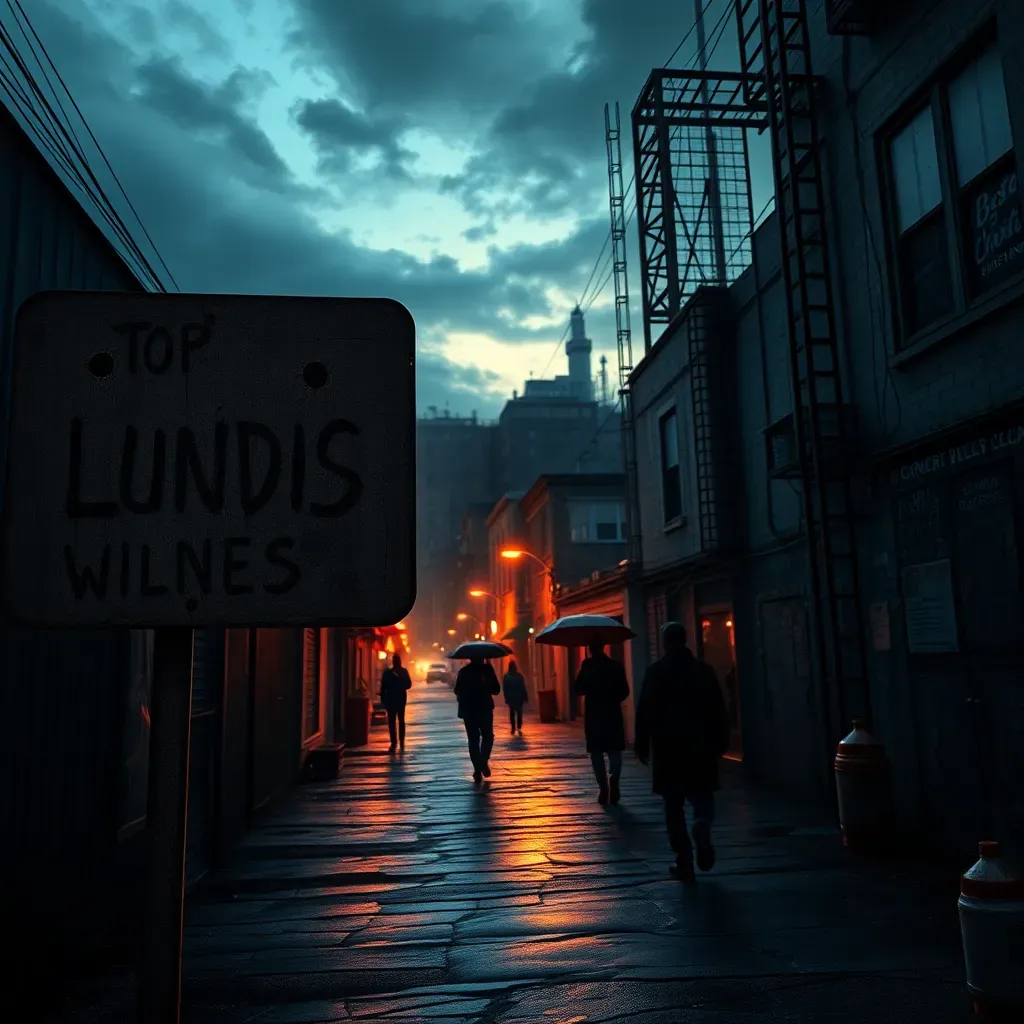Top violent cities in Illinois: shocking crime hotspots revealed
- Why Knowing Illinois’ Most Violent Cities Matters
- Crime in Illinois: What’s Behind the Numbers?
- The Top Violent Cities in Illinois: A City-by-City Breakdown
- What Makes These Cities “Dangerous”? Key Factors Behind High Crime Rates
- How Residents Experience Life in These Crime-Ridden Cities
- Comparing Crime Rates: Illinois’ Most Violent Cities vs. National Averages
- What Are Police and Communities Doing to Fight Crime?
- Driving Risks in Illinois’ Dangerous Cities: Fatal Crash Hotspots
- Opinions from the Ground: What People Are Saying About Crime in Illinois’ Rough Spots
- What You Need to Know About Illinois’ Top Violent Cities
- References and Further Reading
Why Knowing Illinois’ Most Violent Cities Matters
Illinois is a state with a diverse mix of urban and rural areas, home to over 12 million people spread across bustling cities and quiet towns. From Chicago’s towering skyline to smaller communities dotting the landscape, the state’s geography shapes its social and economic fabric. But alongside this diversity, there are areas where crime rates, especially violent crime, stand out.
When we talk about “violent crime,” we mean serious offenses like murder, assault, robbery, and other acts that threaten personal safety. These incidents affect not just the victims but entire neighborhoods, influencing how safe residents feel walking the streets or sending their kids to school.
People care about these stats because safety is a top priority for families, workers, and business owners alike. Knowing which cities have higher rates of violent crime helps folks make informed decisions about where to live, work, or visit.
This article aims to give you a clear picture of the most violent cities in Illinois, backed by FBI crime data, local police reports, and recent studies. We’ll keep it straightforward and honest — no scare tactics, just facts and real talk about what’s happening on the streets.
Crime in Illinois: What’s Behind the Numbers?
Violent crime includes offenses like murder, rape, robbery, and aggravated assault. These are measured by official reports collected by police departments and compiled by the FBI. The numbers tell us how often these crimes happen per population size, giving a rate that helps compare cities fairly.
Illinois’ violent crime rates tend to be higher than the national average in certain cities, but it varies widely. Some places see rates double or more than the national norm, while others are closer to or below average.
It’s important to distinguish violent crime from property crime, which includes burglary, theft, and motor vehicle theft. Both impact residents but in different ways. For example, a city might have a high rate of car theft but lower violent crime.
Several factors influence crime rates. Poverty and unemployment often correlate with higher crime, as economic stress can lead to desperate acts. Education levels also play a role — areas with fewer opportunities sometimes see more crime. Drug abuse and overdose rates are linked to violence too, as substance issues can fuel conflicts and illegal activity.
Over recent years, crime trends have shifted. Some cities have seen violent crime rise, others have managed to reduce it through community programs and policing efforts. How crimes are reported and recorded also affects the stats, as some areas have better systems for tracking incidents.
Community programs, like youth mentorship and neighborhood watches, help shape these trends by addressing root causes and improving safety. Police departments often work closely with residents to build trust and prevent crime before it happens.
The Top Violent Cities in Illinois: A City-by-City Breakdown
Danville: The Most Dangerous Spot in Illinois?
Danville sits in eastern Illinois near the Indiana border, with a population around 30,000. It’s often mentioned as one of the state’s most challenging cities in terms of crime.
Residents face a roughly 1 in 15 chance of being a victim of any crime, and about 1 in 57 for violent crimes specifically. Common incidents include shootings, assaults, and robberies, which have been a concern for years.
Compared to Illinois and national averages, Danville’s violent crime rate is more than double, making it a focal point for safety discussions. Economic struggles like high unemployment and poverty contribute to these challenges.
Local police have launched initiatives focusing on youth mentorship and community engagement to tackle violence at its roots. Programs aim to keep young people busy with positive activities and reduce gang influence.
Residents often share stories of “rough spots” where caution is advised, especially after dark. Neighborhoods with limited street lighting and fewer patrols tend to see more incidents. Community members emphasize the need for ongoing support and resources to improve safety.
Mount Vernon: A Rough Spot With High Crime Rates
Located in southern Illinois, Mount Vernon has a population near 15,000. It’s known for a violent crime rate where the chance of victimization is about 1 in 135.
Violent crimes here include assaults and robberies, while property crimes like motor vehicle theft are also significant. The city struggles with economic issues, including unemployment and lower education levels, which impact crime rates.
Community safety efforts include increased police presence in “dodgy” neighborhoods and outreach programs aimed at building trust between officers and residents. However, challenges remain, especially in areas with limited resources.
Residents often mention certain streets and neighborhoods as “gritty” or “sketchy,” advising visitors to be cautious, particularly at night. Local leaders continue to push for better lighting and more community policing to address these concerns.
Rockford: High Crime and Car Theft Capital
Rockford, the third-largest city in Illinois, has a population around 150,000. It’s notorious for a violent crime rate with a 1 in 69 chance of victimization.
The city also ranks high nationally for motor vehicle thefts, making car owners especially cautious. Violent crimes like assaults and robberies are common in certain neighborhoods.
Crime trends in Rockford have fluctuated, with some years seeing increases and others slight declines. Police departments have implemented neighborhood watch groups and community policing to improve safety.
Economic and social factors, including poverty and drug issues, contribute to the crime landscape. Residents often point out “rough spots” where extra vigilance is needed, especially after dark.
Springfield: The State Capital’s Crime Reality
Springfield, home to about 115,000 people, is Illinois’ capital. Despite its political importance, it faces serious crime challenges.
Violent crime rates here are roughly double the national average. Common offenses include assaults, robberies, and shootings. Property crimes are also frequent.
Traffic fatality rates in Springfield are notable, with risky driving behaviors contributing to accidents. State highways and some city streets are hotspots for fatal crashes.
Community policing and outreach programs work to reduce crime and improve relations between police and residents. Education levels and overdose death rates also influence the city’s safety dynamics.
Peoria: A City Battling Crime Challenges
Peoria, with a population near 110,000, struggles with both violent and property crimes. Violent crime rates are well above national averages.
Fatal crash rates here are among the highest in Illinois, with certain streets identified as risky. Local government and police have launched crime prevention measures, including youth programs and community safety initiatives.
Residents report “busted” neighborhoods where caution is advised, especially at night. Efforts continue to improve lighting and increase patrols in these areas.
Decatur: Crime Trends and Community Response
Decatur, population about 70,000, faces ongoing crime issues. Violent and property crime rates remain high, though some improvements have been noted recently.
Police and community partnerships focus on reducing violence through outreach and support services. Economic challenges and education gaps contribute to the crime environment.
Residents mention “shady” areas where incidents occur more frequently, advising caution. Community programs aim to reclaim these neighborhoods and foster safer streets.
Champaign: Crime Slowly Dropping, But Still Rough
Champaign, home to a major university, has a population around 88,000. Crime rates here are above state and national averages but have been slowly declining.
Violent crimes include assaults and robberies, often concentrated in specific neighborhoods. Education levels are higher here, which helps with crime reduction efforts.
Community programs and police initiatives focus on prevention and engagement. Residents note improvements but still recommend caution in certain “messed-up” areas.
Joliet: Improvements Amidst Crime Challenges
Joliet, with about 150,000 residents, has crime rates above average but shows positive trends. Violent and property crimes are common but decreasing.
Police initiatives and community engagement programs have helped improve safety. Economic and social factors still pose challenges.
Residents describe some “wild” neighborhoods but also highlight areas where safety has improved thanks to local efforts.
Additional Cities to Watch: East St. Louis, Granite City, Moline, Bloomington, Aurora, Cicero
These cities each have unique crime profiles but share common challenges like high violent crime rates and property crime incidents.
- East St. Louis struggles with some of the highest crime rates in the state.
- Granite City and Moline face economic hardships impacting safety.
- Bloomington and Aurora have pockets of “rough spots” but also active community programs.
- Cicero deals with crime related to its urban density and social factors.
Community responses vary, with some cities seeing promising partnerships between police and residents, while others continue to face uphill battles.
What Makes These Cities “Dangerous”? Key Factors Behind High Crime Rates
Poverty and unemployment are major drivers behind violence in many Illinois cities. When people lack jobs or steady income, crime can become a way to survive or express frustration.
Education gaps also matter. Areas with fewer schools or lower graduation rates often see higher crime, as opportunities for youth are limited.
Drug abuse and overdose deaths tie closely to violent crime. Substance issues can lead to conflicts, thefts, and other offenses.
Geographic and urban design factors play a role too. Some neighborhoods have poor lighting, limited police presence, or are isolated, making them “rough spots” or “gritty neighborhoods.”
Policing challenges include building trust in communities that feel underserved or targeted. Without cooperation, crime prevention becomes harder.
Local events, gang activity, and social unrest can spike crime temporarily or create ongoing problems in certain areas.
How Residents Experience Life in These Crime-Ridden Cities
Real people living in these cities often share mixed feelings. Many express concern about safety on streets and in schools, especially at night.
Stories from Reddit threads and local news reveal how crime affects daily life — from avoiding certain routes to worrying about kids playing outside.
Mental health impacts are common, as constant awareness of crime can cause stress and anxiety.
Yet, community efforts to reclaim neighborhoods give hope. Residents organize cleanups, neighborhood watches, and youth programs to make their areas safer.
Locals often wish outsiders understood the complexity — that these cities have good people and efforts underway, even if some areas remain “sketchy” or “dodgy.”
Comparing Crime Rates: Illinois’ Most Violent Cities vs. National Averages
| City | Violent Crime Rate (per 1,000) | Property Crime Rate (per 1,000) | Fatal Crash Rate (per 10,000) |
|---|---|---|---|
| Danville | 66.7 | 120.5 | 0.8 |
| Mount Vernon | 7.4 | 45.3 | 0.7 |
| Rockford | 14.5 | 90.2 | 1.0 |
| Springfield | 13.8 | 85.7 | 0.9 |
| Peoria | 15.2 | 95.1 | 1.1 |
| National Average | 4.0 | 24.0 | 0.8 |
Understanding these numbers helps residents and visitors gauge risk. While some Illinois cities have rates well above the national average, others are closer to or below it. This context is key when making safety decisions.
Violent & Property Crime Rates in Top Illinois Cities vs. National Average
Danville
66.7
120.5
Mount Vernon
7.4
45.3
Rockford
14.5
90.2
Springfield
13.8
85.7
Peoria
15.2
95.1
National Average
4.0
24.0
What Are Police and Communities Doing to Fight Crime?
Community policing programs are a big part of crime prevention in Illinois. Officers work closely with residents to build trust and address issues before they escalate.
Youth mentorship initiatives keep young people engaged in positive activities, steering them away from crime.
Some cities have seen success with neighborhood watch groups and increased patrols in “sketchy” areas.
Challenges remain, especially in “rough” or “shady” neighborhoods where trust is low. Police also collaborate with domestic violence support services and overdose prevention programs to tackle related crime causes.
Residents can get involved by joining community groups, reporting suspicious activity, and supporting local safety initiatives.
Driving Risks in Illinois’ Dangerous Cities: Fatal Crash Hotspots
Cities like Waukegan, Peoria, Rockford, Springfield, Chicago, and Aurora have some of the highest fatal crash rates in Illinois.
Common causes include risky driving behaviors, such as speeding and distracted driving. State highways often see more fatal crashes than city streets, but urban areas still face significant risks.
The National Highway Traffic Safety Administration and local agencies work on campaigns to improve road safety.
Tips for staying safe include obeying speed limits, avoiding distractions, and being extra cautious on poorly lit or high-traffic roads.

Opinions from the Ground: What People Are Saying About Crime in Illinois’ Rough Spots
“I’ve lived in Danville for years, and while some parts are rough, there’s a strong community trying to make things better. Just gotta be smart about where you go at night.” – Local resident, Reddit thread
“Mount Vernon has its problems, but the police have stepped up patrols in the worst neighborhoods. It’s not perfect, but there’s progress.” – Community leader, local news interview
“Rockford’s car thefts are crazy, but neighborhood watch groups are making a difference. People are more aware and looking out for each other.” – Business owner, local forum
“Springfield’s crime rates are high, but community outreach programs have helped build trust between police and residents. It’s a work in progress.” – Police officer, news article
What You Need to Know About Illinois’ Top Violent Cities
Illinois has several cities where residents face higher risks of violent crime and property offenses. Danville, Mount Vernon, Rockford, Springfield, Peoria, and others top the list with rates well above national averages.
Economic challenges, education gaps, and drug issues contribute to these problems. However, community efforts, police programs, and local initiatives are actively working to improve safety.
If you live in or visit these cities, staying informed about “rough spots” and following safety recommendations can help reduce risks. Remember, many residents are committed to making their neighborhoods better places to live.
References and Further Reading
- FBI Crime Data for Illinois
- Most Dangerous Cities in Illinois - Property Club
- Most Dangerous Cities to Drive in Illinois
- 10 Cities To Avoid in Illinois
- Illinois Cities Among Most Dangerous In The Nation
- 11 Most Dangerous Cities In Illinois
- Illinois Cities Among Most Dangerous In The Nation
- Reddit Discussions on Midwest Cities
What do you think about the crime situation in Illinois cities? Have you experienced or witnessed incidents in any of these areas? How would you like to see communities and police work together to improve safety? Share your thoughts, questions, or stories in the comments below!
 Is Chicago crime rate for expats really that bad?
Is Chicago crime rate for expats really that bad? Is Chicago places to avoid? Shocking spots locals won’t tell you about
Is Chicago places to avoid? Shocking spots locals won’t tell you aboutSi quieres conocer otros artículos parecidos a Top violent cities in Illinois: shocking crime hotspots revealed puedes visitar la categoría Illinois.

Leave a Reply